Student Success & The Northern Experience
Our Veterinary Technician prepares you for an exciting career caring for animals. Our unique learning environment equips you with the skills and expertise for a successful career, starting from the first semester. Gain extensive, hands-on experience with our animal colony and benefit from our exceptional facilities and small class sizes.
Learn to perform basic patient examination, collect data on vital signs, administer medications, prepare pharmaceuticals as prescribed by a veterinarian and much more. Our program also covers veterinary practice management skills including computer applications, recognizing behavioral signs of small animals and educating and counseling clients in the area of pet nutrition.
Completing our program positions you well to become a Registered Veterinary Technician (RVT).
Does this program sound like a good fit for you?
Connect with us to learn more.
Course Information
2024-2025 Academic Year
Semester 1
The course is designed to help students gain insights and skills to promote personal and professional development. Students will develop an understanding of how they manage their lives and incorporate skills to maximize their strengths and reduce the impact of less effective techniques. Students will learn about resources that are available to them and the intelligence of accessing additional support when needed. The content of this course provides students with the opportunity to lay a foundation for lifelong learning; learn to communicate effectively, build and value productive and satisfying diverse relationships and prepare for the challenges and rewards that make life meaningful.
42 Hours
Animal care providers often handle animals with behaviour problems. They must know what advice to give and when to refer the problem to the veterinarian. The technician/assistant/groomer must also know the procedure involved in referral to a behavioural specialist and/or an obedience trainer.
14 Hours
This one semester course is designed for the Animal Grooming, Veterinary Assistant, Veterinary Technician and the Veterinary Technology programs. The course is designed to look at their role in the daily operation of a veterinary practice. The course will include sections on customer service, telephone skills, and welcoming skills, confrontation and conflict resolution. The course will assist students in becoming more comfortable assisting clients through the grief cycle. There will be a component on Client Communication utilizing both oral and written communication in the veterinary practice. This course will have a self-directed on line grammar component. This course will enable the students to practice the skills required for effective work in client relations.
42 Hours
This first calculations course focuses on mathematical principles, dimensional analysis including unit conversions and the fundamentals of solutions and concentrations. Application from nursing and the veterinary sciences are explored to show where and how mathematical techniques are required in a lab setting.
28 Hours
This course is an introduction to laboratory procedures and practice. Students will become familiar with tests commonly and most frequently used in the veterinary laboratory. Students will acquire the proper techniques to perform tests and learn the significance of test results. An understanding of what is considered normal or abnormal will become clear. A large segment of time will be used to become familiar with quality control and the significance of its use. Hematology, sterilization, disinfection and aseptic techniques will be of special focus.
70 Hours
This course will prepare the student to function in a veterinary environment. Students will provide care for the colony animals housed at Northern College. The use of Standard Operating Procedures will assist the student. The Veterinary Science facility simulates the professional environment and enables the students to learn the skills necessary to function as a productive team member.
14 Hours
This course is an introduction to the responsibilities of a veterinary technician working in a clinic. It begins by emphasizing safety for both the animal and handler in applying appropriate physical restraint. Students are alerted to other common hazards of the profession, such as those found in anesthesia, radiology and zoonosis. Further areas of study include: taking the history, conducting a physical examination, keeping medical records, animal identification, skin and coat care, vaccination and parasite control In this course, students learn veterinary terminology so they can communicate with other members of the veterinary team and understand the literature of the profession. The course delineates the different roles for veterinarians, technicians and assistants on the veterinary team and discusses professional organizations that determine the scope of practice for each. Students are made aware of the continuing education opportunities open to graduate technicians.
42 Hours
This course is a practical lab that will allow the students to gain hands on experience enhancing the knowledge that they have acquired in Anatomy and Physiology I. The students will learn why and how necropsies are performed and also have a chance to practice sample collection of specimens. The course will use multiple modalities such as cadavers, individual specimens and necropsy manikins (Syndavers).
14 Hours
This introductory course begins with the basic principles of living matter and evolves to consider the mammalian body and how it works. While the focus is on the domestic dog and cat, comparative differences between small animals and livestock are covered. By the end of the course, the student has covered the following body systems- integumentary, skeletal, muscular, cardiovascular, lymphatic, respiratory and digestive.
56 Hours
This course is designed to give students the practical skills required to function as veterinary technicians in a clinical environment. Each student will be part of a group that has the responsibility of monitoring hospitalized patients on a daily basis.
28 Hours
Semester 2
Improving your knowledge and understanding of the history of the Indigenous peoples of what we now call Canada is an important step to enable Indigenous and non-Indigenous people, organizations, and communities to work together more respectfully. Throughout this course you will have the opportunity to learn, discuss and reflect about many topics that are relevant in the learning journey towards reconciliation.
42 Hours
The comparative anatomy and physiology of the digestive systems of domestic animals will be studied. The nutritional requirements of the animal in health and disease with respect to proteins, carbohydrates, fats, water, vitamins and minerals will be discussed. The course will cover feeding procedures and feeds for dogs, cats, cattle and horses.
28 Hours
This is the second calculations course focusing on drug dosage calculations. The learner will perform calculations to reconstitute drugs, determine dosages based on body weight and body surface area and in the administration of intravenous drugs. Applications from nursing and the veterinary sciences are explored to show where and how mathematical techniques are required in a lab setting.
28 Hours
This course is a continuation of Laboratory Procedures and Techniques I. Students will study clinical chemistry, urinalysis, and cytology while practicing the techniques taught in the first semester. Special care will be placed on understanding the consequence of failure to report accurate results. Confidence limits will be stressed. The final exam for this semester will include material from the first and second semesters.
70 Hours
This course will prepare the student to function in a veterinary environment. Students will provide care for the colony animals housed at Northern College. The use of Standard Operating Procedures will assist the student. The Veterinary Science facility simulates the professional environment and enables the students to learn the skills necessary to function as a productive team member.
14 Hours
The role of veterinary professionals in managing behaviour problems of dogs and cats will be examined. The course includes discussion of ways to prevent and treat behavioural problems, as well as the appropriate procedure for referring clients who desire resolution of their animal’s behavioural problems. Common problems such as house training, destructive scratching in cats and destructive chewing in dogs are covered. An in depth discussion of anesthesia and analgesia completes the course.
42 Hours
A continuation of Anatomy and Physiology I, this course continues with the study of the major body systems, from the nervous system to the reproductive systems. The unifying themes of the interrelationships of body organ system, homeostasis, and the complementary nature of structure and function will provide the basis for understanding the workings of the human body.
56 Hours
The field placement course provides a valuable opportunity for students to experience a veterinary practice first hand. The field placement also permits students to demonstrate and practice their theoretical knowledge, values and skills taught in the classroom and to be evaluated on those competencies. This field placement course provides an opportunity for students to apply and consolidate their education from the first and second semesters of their program of study.
80 Hours
In this competency-based course, students build upon previously acquired skills and increase their efficiency and understanding. While functioning as part of a group, students participate in physical examinations, intramuscular, subcutaneous and intravenous injection techniques, restraint of small animal patients, surgical preparations, anal gland expression, enema administration and taking blood. Students are marked on skill and willingness to participate.
28 Hours
This course is a practical lab that will allow the students to gain hands on experience enhancing the knowledge that they have acquired in Anatomy and Physiology II. The students will learn why and how necropsies are performed and also have a chance to practice sample collection of specimens. The course will use multiple modalities such as cadavers, individual specimens and necropsy manikens (Syndavers).
14 Hours
In this course students study the parts and function of x-ray machines, the formation and properties of x-rays, the principles of image formation, radio graphic techniques and radio graphic processing. Standard views and radio graphic anatomy will be studied. Students will be provided with the knowledge required to obtain quality diagnostic radio graphs of small animals. The dangers of radiation and how to avoid radiation injury will be outlined.
42 Hours
This course is intended to be comprehensive, bringing students from relatively little knowledge in veterinary dentistry to a practical working knowledge. The course will include sections on oral examination and disease recognition, dental instruments and equipment, anesthesia and pathogens.
42 Hours
Semester 3
This course will enable the students to become familiar with specific employment requirements for their field of interest. The students will also have the opportunity to learn how to self-market for job finding, as well as how to maximize their potential for success in an interview situation. This course is designed to assist students in obtaining employment. Students will also learn to prepare themselves for varied Fieldwork Placements. This semester will concentrate on incorporating skills from the Client Relations Course to further develop their interpersonal communication skills through their ability to prepare for an employment interview. The course will also discuss work ethics and the role they play in long term employ ability.
14 Hours
This course consists of weekly study sessions to help graduating students prepare to challenge their professional registry examination, the Veterinary Technician National Examination (VTNE). The content reflects the practice domains covered by the VTNE. It is recognized that acquisition of medical vocabulary is essential in answering many VTNE questions, as is proficiency in basic mathematical calculations. Students will review strategies considered helpful in taking multiple choice tests.
14 Hours
The purpose of this course is to develop the skills necessary to effectively use computer programs specific to the veterinary environment. This course will give the student practical skills on specialized veterinary software packages such as AVImark and Impromed. Students will be able to set up files for new clients and/or new patients. They will know how to bill for services and products, print appropriate certificates as well as prescription labels. Accepting payments will be practiced.
28 Hours
This course is a continuation of Laboratory Procedures and Techniques I and II. A review of health and safety standards will help to ensure student’s well being and safety. Parasitology, virology and immunology will be stressed. Abnormal hematology and chemistry cases will be reviewed to provide continuing development of laboratory expertise. The final exam for this semester will cover material from the first two semesters as well as the third semester.
70 Hours
Students will explore the world of the laboratory animal. Students will learn nursing care and husbandry theory and apply this knowledge to the following species: rats, mice, hamsters, gerbils and guinea pigs.
28 Hours
This course is a continuation of Kennel Duty I and II. The student will be responsible for the administration of medications, care and where required, bandaging of the kennel animals.
14 Hours
This course is designed to give students the chance to build on skills already introduced in the first two courses in the Clinical Exercises series.
28 Hours
This course is a practical training session for veterinary technicians to become familiar with anesthesia and surgical procedures. There is a heavy emphasis on supervised hands on experience. The class is divided into small groups for better supervision and learning. Each group is responsible for taking a patient from the preoperative examination and laboratory evaluation through to patient recovery and return to the owner.
42 Hours
This is the first of two courses which together provide a comprehensive review of important groups of drugs used in veterinary medicine. The course begins with general aspects of pharmacology such as the sources of drugs, their modes of action, dosage forms and pharmacokinetics but progresses to discuss in detail those drugs which are used to correct disorders in specific body systems. The student is introduced to specific legislation affecting the storage and dispensing of pharmaceuticals.
42 Hours
This course offers students the opportunity to put into practice the knowledge obtained in Radiology I. Students will be placed in small groups and expected to take x-rays using all safety techniques and guidelines as demonstrated by the professor. Students will be evaluated on their professionalism and the quality of the x-rays produced.
42 Hours
The veterinary technician student will learn to prepare patients for surgery, and describe how to utilize surgical instruments and equipment. The student will understand the theory of setting up and controlling the surgical site and its environment. Students will be introduced to scrubbing in to assist the veterinarian in surgery. The student will learn how to properly open and handle surgical packs, and suture material. The student will learn the theory of maintaining a sterile environment without causing contamination. The student will learn how to carry out postoperative care, monitoring and final client instructions. Students will learn how to assess, treat, and stabilize an emergency situation by telephone or in the clinic. The student will study how to speak to clients and what procedures are to be carried out in specific emergency situations- bandaging procedures, wound care and when to apply splints, casts and other external supports.
42 Hours
This course is designed to provide practical training for students to become familiar with surgical procedures and to practice dental prophylaxis and anaesthetics learned in lectures. Students will carry out procedures at a veterinary clinic for one 3-hour period once every third week during the semester. The sessions are set up to mirror the normal procedures the veterinary technician student will encounter after graduation. The surgical procedures performed by the students are in keeping with the Canadian Veterinary Medical Association guidelines.
42 Hours
This course considers the basic maintenance and care of large animals. Management techniques for the equine, bovine, ovine and porcine species are considered. The emphasis is on health related issues. The objective is to introduce the student to the large animal industry production practices. The care of the newborn and common disease prevention protocols is discussed.
70 Hours
General Education Courses are selected online each semester by the student from a list provided and exposes students to a related area of study outside of their immediate academic discipline. Certain programs have predetermined electives.
42 Hours
Semester 4
Students will be expected to spend four weeks at the clinic where they have arranged placement. The clinic must be able to provide the necessary work experiences. It is expected that students will perform the duties regularly expected of a new graduate with the same experience level. This will give students the opportunity to experience clinic life, and then return to school to apply the newly gained knowledge and expertise to their schoolwork.
160 Hours
This is the final course in the Laboratory Procedures and Techniques series. The disciplines of microbiology and mycology will be taught in this semester. Additional time will be allocated to develop student’s proficiency in all areas of lab techniques. The final exam in this semester will include material from all four semesters.
55 Hours
This course will prepare the student to function in a veterinary environment. Students will provide care for the colony animals housed at Northern College. The use of Standard Operating Procedures will assist the student. The Veterinary Science facility simulates the professional environment and enables the students to learn the skills necessary to function as a productive team member.
11 Hours
The course prepares students to challenge their national professional examination and become registered veterinary technicians.
11 Hours
This course is a continuation of the practical training for veterinary technicians to become familiar with surgical procedures. Students practice their skills while participant in a surgical team. New procedures that were not previously covered in Surgical Exercises I are added. The class is divided into small working groups to allow an optimum supervisor to student ratio. Each team is responsible for taking a patient from pre-surgical examination and laboratory screening through to patient recovery and return to the owner. Routine veterinary procedures are practiced under anesthesia.
33 Hours
This is the final course in the Clinical Exercises series. The students will be marked on their willingness to attempt the techniques practices in the course as well as the quality of their performance. Case studies will be introduced and each student will have the opportunity to participate in the investigative processes in an attempt to aid the veterinarian in finding a diagnosis.
22 Hours
This course is a continuation of Pharmaceutical Principles I. Together these courses are designed to give veterinary technician students a fundamental understanding of general aspects of pharmacology, while covering in more detail specific classes of drugs that are important in veterinary medicine such as microbials, anesthetics and antiparasitics.
33 Hours
This course is a continuation of Radiology II. Each student will be assigned to a small group and this group will be expected to carry out the x-ray techniques as requested. Students will be marked on the quality of the x-ray film as well as their professional conduct.
33 Hours
This course gives the student the opportunity to practice the skills needed to perform dentistry. The knowledge gained in Dentistry I will be put into practice. Students will be marked on their best knowledge of instruments, techniques, and their willingness to attempt the skills demonstrated by the professor.
33 Hours
This course is a continuation of the series of clinical studies courses which prepare students for work. The course deals with many aspects of small animal nursing care, ranging from the needs of neonatal patients requiring intensive care to the needs of senior patients with chronic conditions such as oncology patients. The course deals with nursing procedures; fluid therapy, blood transfusions, oxygen therapy, nutritional support of hospitalized patients, skin care and physiotherapy. The care and management of caged birds and exotic pets is also examined. There is a brief overview of advanced imaging technologies such as ultrasound and endoscopy.
33 Hours
This course is designed to introduce students to the world of wildlife rehabilitation and exotic animal care. Students will experience some hands on care to compliment classroom theory.
33 Hours
Career Ready Graduates
Articulation Agreements
A number of articulation agreements have been negotiated with universities and other institutions across Canada, North America and internationally. These agreements are assessed, revised and updated on a regular basis. Please contact the program coordinator for specific details if you are interested in pursuing such an option.
Accreditation
Our Veterinary Technician program is accredited by:
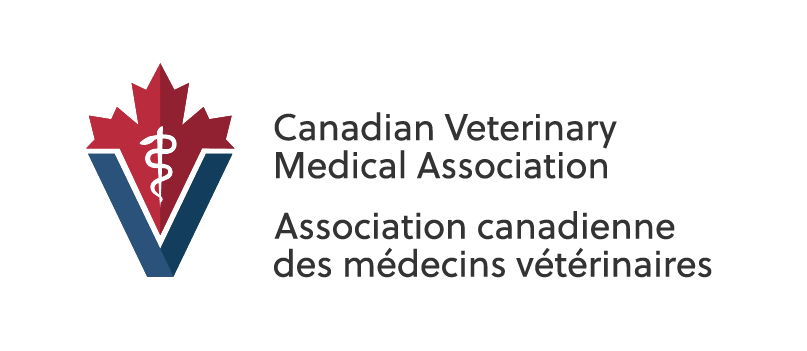
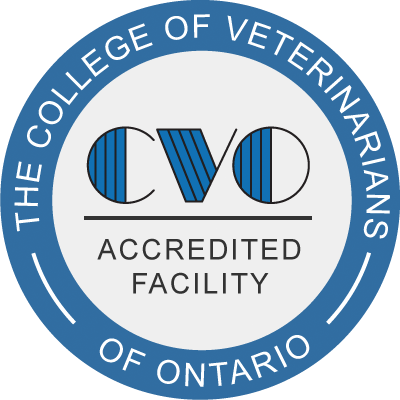
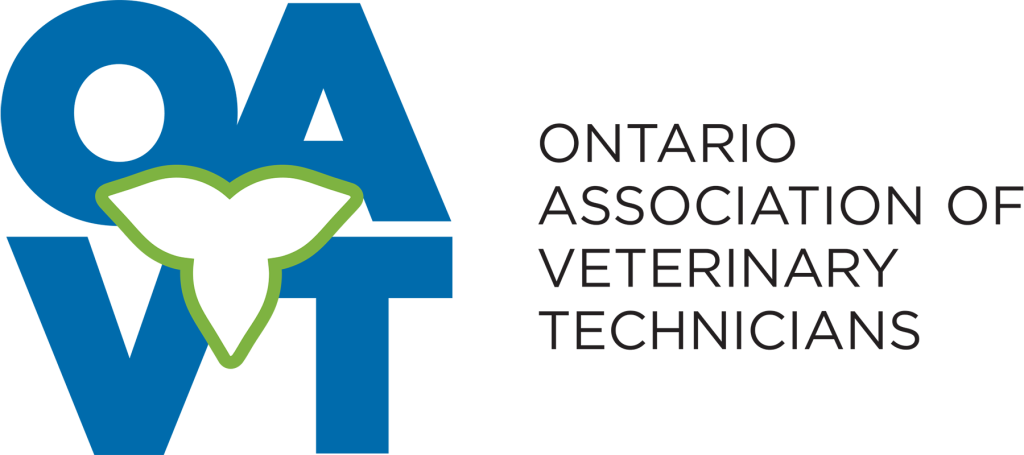
Since we are accredited by the Ontario Association of Veterinary Technicians (OAVT) our graduates are eligible to write the Veterinary Technician National Examination (VTNE) examination.
- Participate in facility management utilizing traditional and electronic media and appropriate veterinary medical terminology and abbreviations.
- Communicate effectively and accurately in a professional manner in all formats – written, oral, non-verbal and electronic.
- Follow and uphold applicable laws and the OAVT’s code of ethics to maintain high ethical standards so that high quality care is provided to patients, clients, employers and the veterinary profession.
- Safely and effectively administer and dispense prescribed drugs to patients.
- Demonstrate and perform patient assessment techniques with minimum stress and maximum safety in a variety of animal species so that objective and subjective data is accurately obtained.
- Demonstrate and perform husbandry, nutrition, therapeutic and dentistry techniques appropriate to various animal species as directed but the veterinarian in order to enhance wellness and achieve maximum health benefits for the patient.
- Safey and effectively select, utilize and maintain anesthetic delivery and monitoring instruments and equipment to provide maximum benefit and safety to the patient and staff.
- Safely and effectively manage and maintain patients in all phases of anesthesia providing for adequate anesthesia, analgesia and safe recovery.
- Understand and integrate all aspects of patient management for common surgical procedures in a variety of animal species (ovariohysterectomy in dogs and cats, and orchiectomies in the dog, cat and other common species).
- Provide the appropriate instruments, supplies and environment to maintain asepsis during surgical procedures to ensure maximum safety and benefit to the patient.
- Demonstrate knowledge of proper handling, packaging and storage of specimens for laboratory analysis to ensure safety of patients, clients, and staff.
- Safely and effectively produce diagnostic radiographic and non-radiographic images using non manual restraint where possible to ensure maximum diagnostic benefit and minimize personnel radiation exposure.
- Safely and effectively handle common laboratory animals used in animal research.
- Describe provision of safe and effective care for birds, reptiles, amphibians, guinea pigs, hamsters, gerbils, and ferrets.
Career Opportunities
Graduates may find employment as veterinary technicians working in veterinary practices, humane societies, public or private zoos, research facilities, telemedicine or with federal and provincial governments. They may also work as sales representatives for veterinary companies.
- Ready to spend two hours of studying outside of class for each hour of instruction? 20-25 hours/week? There is a lot to learn!
- Strong math, basic sciences and English language skills? Students who have not taken higher level (university, university/college) courses in secondary school tend to have more difficulty with the program.
- Able to manage time and work well?
- Able to take direction and accomplish tasks efficiently?
- Able to work with others as a member of a team and in a leadership role?
- Able to combine compassion, knowledge and dedication to provide quality animal nursing care?
- A good communicator with the interpersonal skills to develop professional relationships with coworkers and clientele?
- Able to lift and carry up to 25kg, work in a physically demanding environment and stand for long periods of time?
- Comfortable working in an environment where you may be assisting or performing medically invasive procedures, and dealing with animal bodily fluids, lab specimens etc.?
- Experienced in the field? While not necessary for admission, exposure to work carried out in a veterinary clinic helps students realistically understand whether this program – or our Veterinary Assistant or Animal Grooming programs are a better fit for them.
Admissions Information & Requirements
Program Specific Requirements
Veterinary Technician Requirements [PDF, 509 KB]
Admission Requirements
- Ontario Secondary School Diploma (OSSD)
- Grade 12 English (C, U)
- Grade 12 Math (C, U)
- Grade 12 Chemistry (C, U) (will accept Grade 11 “U” Chemistry in place of Grade 12 “C” Chemistry)
- Grade 11 Biology (C, U)
- Minimum 60% GPA required in all pre-requisite courses
Or equivalent
Academic prerequisites for this program may be obtained free of charge through Academic Upgrading.
Applicants who do not have a high school diploma or equivalent and will have reached the age of 19 years on or before the start of the program must undergo academic testing and may be required to complete Prior Learning Assessment & Recognition (PLAR) process to demonstrate equivalency of admission requirements prior to admission into a program.
For more details, please contact the Admissions Office at 705-235-7222 or admissions@northern.on.ca.
Additional Admissions Requirements
- Proficiency in word processing recommended.
- Rabies vaccine series and titre prior to start of program (at student’s expense).
- Some experience in a veterinary clinic or hospital is considered an asset.
We strongly encourage applicants to obtain 20 hours of volunteer work in a veterinary hospital or clinic wherever possible. It is not a firm requirement, but we encourage it since work experience will be an advantage to program applicants. It helps you better understand your own interests and “fit” within our range of veterinary sciences programs and the tasks that graduates are called upon to perform in their duties.
This program is oversubscribed and receives more than enough qualified applicants to fill the seats available. Please apply by February 1st. Applicants accepted into oversubscribed programs confirm their offer and pay their fees early to reserve a place in the program.
International Admission Requirements
1. Proof of Senior High School Diploma/Certificate
2. English Proficiency (we will require one of the following):
- IELTS Academic International English Language Testing System: a minimum overall score of 6.0 must be achieved with no individual band score under 6.0; however, we will accept one band at 5.5.
- TOEFL (Test of English as a Foreign Language) – Internet Based Test (iBT) overall minimum score of 79.
- PTE (Pearson Test of English) Academic – Graduate Diploma: 58+.
CO-OP Work Permit is mandatory for this program to participate in unpaid program placements.
If your country of citizenship has English as its official language, we may accept alternate proof of English Proficiency.
All educational documents must be submitted in English and will be dependent on the country of citizenship.
For more information, please contact admissions@northern.on.ca.
Additional Information
A limited number of spots are available for graduates of Northern College’s Veterinary Assistant or Animal Grooming programs.
Graduates of those programs that wish to apply to the Veterinary Technician / Technology program must have – in addition to the usual requirements for direct entry from high school – a 75 percent minimum average (3.0 GPA) upon graduation from Veterinary Assistant or Animal Grooming programs. Applicants will be assessed according to highest academic achievement in their program.
Tuition, Fees & Payments
The tuition and fees information is typically updated yearly for the upcoming Academic Year in May. The amounts are for the full academic year.
Amounts may be based on last years tuition and fees and are subject to change.
If you are a current student, please refer to your Student Account or see a Student Services Clerk for the most up-to-date information.
Tuition
Domestic: $2,720.56
International: $14,813.46
Program Specific Fees
Vet Tech Exit Exam: $180.00The VTNE testing fee supports preparatory testing for certification exams.
Ancillary Fees
Ancillary fees are paid in full for the entire academic year in the first semester.
The Convocation and Official Documentation Fee (GRA) of $100.00 only applies for the first year of each program.
Please see Detailed Ancillary Fees for more information.
| Ancillary Fees by Campus | Domestic | International |
| Haileybury (HL) | $976.50 | $1,589.00 |
Find Your True North.
At Northern College, you’re a part of a community.
From your teachers to support staff and administrators, we are all here to help you get an education and make some lasting connections along the way.
Your success is incredibly important to you, so we provide student supports to help you achieve your goals. From study assistance and accessibility services to mental health supports and financial aid, we’ve got you covered.
Each of Northern’s campuses boasts exercise facilities, a gym, cafeteria, study areas and a library – places that you can go to help keep you focused as you work your way through your studies. The communities we call home are incredible places, filled with amazing people and things to do.
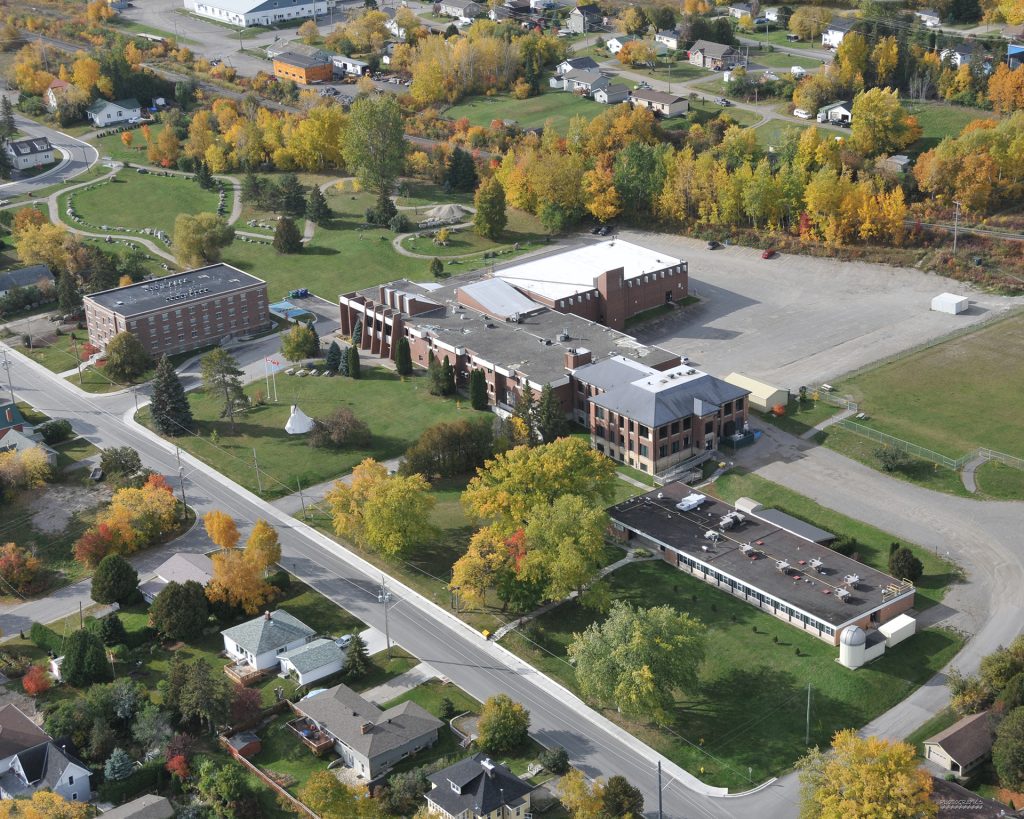
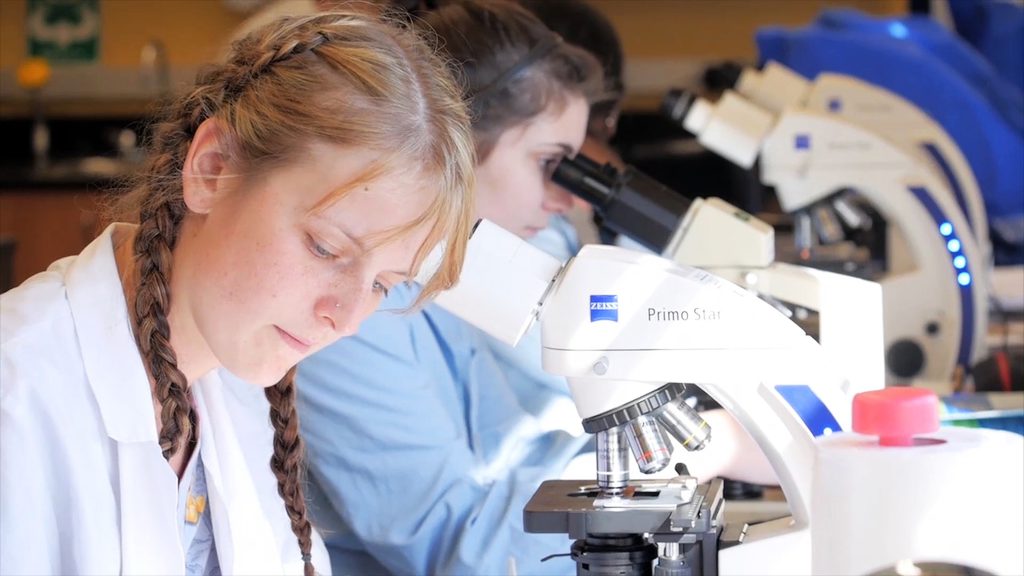
Does Northern College sound like a good fit for you?
Here’s how to take your first steps on your new exciting and rewarding career path.
